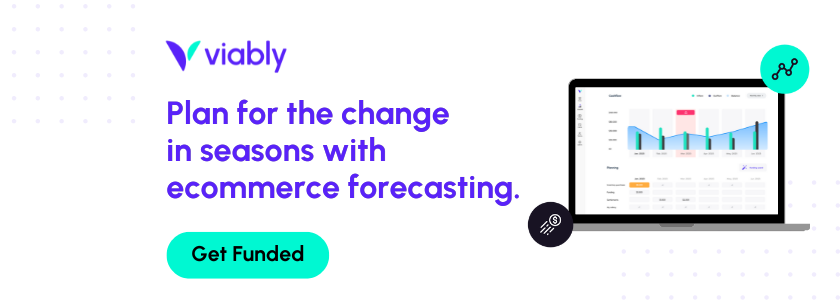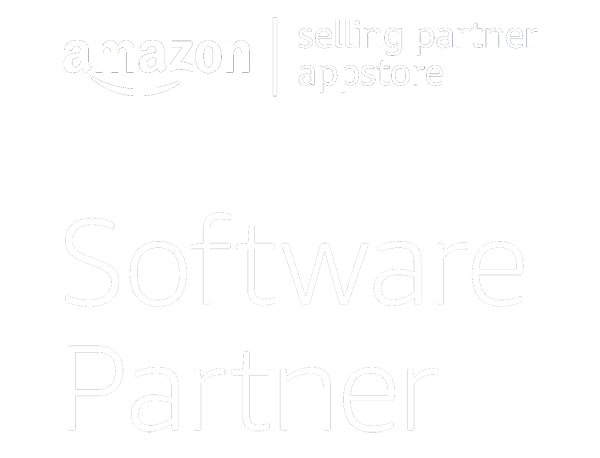Ask anyone who sells products on Amazon, eBay, Walmart+, or a Shopify store their greatest challenge. It won’t be long until eCommerce cash flow comes up. Between seasonal cash crunches, races for inventory, and moving targets for product trends, it can be very difficult to fund your opportunities in eCommerce.
Why is eCommerce cash flow so important?
Many eCommerce businesses begin with a small investment of personal funds from the business owner. As sales grow, the business grows. But even with that success, it’s difficult to maintain sufficient cash on hand for new opportunities. Whether it’s to buy inventory, for marketing expenses, or simply to keep the lights on in the warehouse, eCommerce businesses need a steady stream of cash coming in the door. Periods of high revenue will fluctuate, and even during sales upticks, businesses often wait weeks or months for the money to hit their checking account.
This makes cash flow unpredictable. Seasonal sales cycles, changes in product trends, and other economic factors can all impact eCommerce cash flow.
That’s why it’s so important to have a strong eCommerce cash flow management strategy in place. By taking a proactive approach, you can insulate yourself from some of the biggest challenges caused by tight cash flow. Here are four tips you can use to improve eCommerce cash flow for your business.
Negotiate favorable payment terms with suppliers
One of the best ways to improve eCommerce cash flow is to negotiate favorable payment terms with your suppliers. If you can get extended terms or even better, pay for your inventory after it’s sold, you can free up a lot of cash that would otherwise be tied up in inventory.
Once you’ve negotiated the best terms available, it’s also critical to be sure your largest invoices are staggered. If you sell numerous product online, space out your orders so that your continuous income can cover the costs. Map your supplier invoices and due dates before you sign for an order. This way, you won’t need to sweat the due date later on.
As a bonus, mapping your payment due dates and paying on time will help you build business credit, which will open doors for funding options. (More on this in a moment.)
Use free eCommerce software to project income and expenses
eCommerce accounting can be a tall order. Sellers often use a variety of cards and accounts to pay for expenses. Most sellers use a combination of tax pros, accounting softwares, spreadsheets, and bank statements to piece together their financial picture. That’s not an effective way to project cash flow. With a free eCommerce software like Viably, you can track and project income and expenses based on your business data and trends.

It’s critical for eCommerce businesses to project not only how much revenue they can expect, but also when they can expect the money in their account. Amazon sellers, for instance, will wait a couple weeks from when they make the sale to when they actually get paid. That can lead to very tight cash flow during the holiday season. The better your projections, the better you can plan for your busiest periods.
Find eCommerce funding to fill cash flow gaps
If you’re struggling to manage cash flow, eCommerce funding can be a lifesaver. In the busiest of seasons, you will have higher inventory, operating, labor, and marketing costs. In some cases, your income from sales won’t hit your bank account in time to cover it all.
It’s not always easy to fund an eCommerce business. For marketplace resellers and wholesalers, banks often view your business as risky and volatile. You might be denied a line of credit or an SBA Loan. But if you’re making sales online, you can almost certainly find an option for a cash advance. This can be helpful ahead of busy season to load up on inventory. And it can also be helpful during busy season to cover operational expenses or replenish inventory.
Trim your eCommerce expenses during slow season
Most eCommerce businesses are seasonal. The holidays represent high income periods. If your business sells outdoor sports equipment or apparel, summer months might also be busy. But whatever your eCommerce slow season is, it’s important to take a close look at your expenses during these months and see where you can trim the fat.
One way to do this is to renegotiate any leases or contracts that are up for renewal during your eCommerce slow season. This could be anything from office space to warehousing contracts. If you can get a better rate by waiting until your eCommerce busy season, it could save you a lot of money in the long run.
Another way to cut costs during your eCommerce slow season is by reducing or suspending any marketing campaigns that you have running. This doesn’t mean stopping all marketing efforts, but scale them back to only the most essential campaigns. It’s possible that the money you’re spending on product placement during the slow season would go further if you saved for inventory during the busy season. By doing this, you can free up cash that can be used to cover other expenses when the money is tighter.
The more cash you have at your disposal, the more advantages you’ll have over your competition selling online. You’ll have more opportunities to invest in PPC ads and product placement. You’ll have a leg up on inventory and fulfillment versatility. Improving eCommerce cash flow should always be a priority for online sellers. Start to implement these tips, and be sure you have a way to track your business cash flow in real time.
Read our guide for a more comprehensive overview of small business cash flow.




